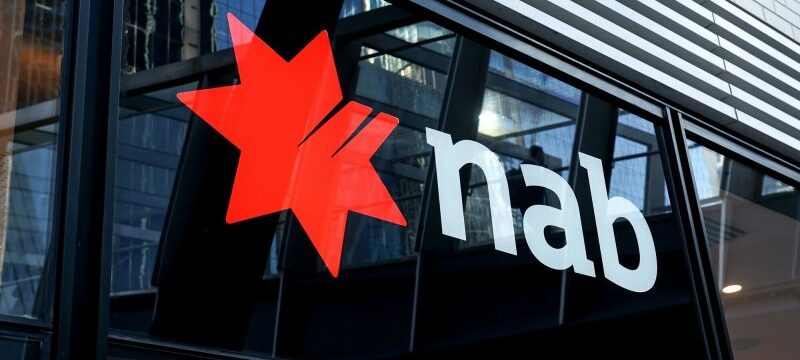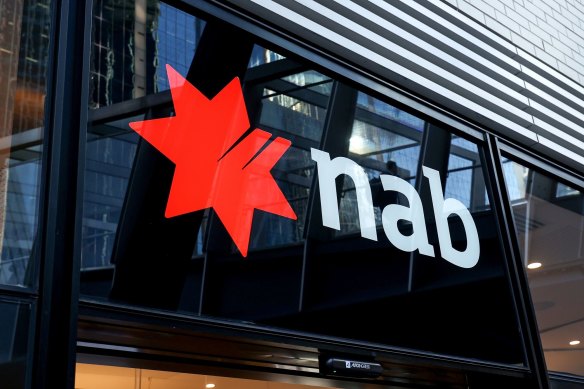Save articles for later
Add articles to your saved list and come back to them any time.
Staff at National Australia Bank will have working-from-home rights enshrined in a new pay deal that will see their wages rise by 17.5 per cent over four years, as big-four competitor Commonwealth Bank faces a looming fight over its mandate to return to the office.
Following drawn out negotiations, NAB struck the enterprise agreement with the Finance Sector Union to award staff earning up to $100,000 a 5 per cent pay increase this year and next year, followed by 4 per cent and 3.5 annual rises, in an unusually long deal that includes conditions such as cultural leave for Indigenous staff.
NAB has struck a 17.5 per cent pay deal with its staff that includes remote work rights.Credit: Bloomberg
FSU national secretary Julia Angrisano hailed the new agreement after the workforce knocked back an offer in November for a 5 per cent increase in the first year and 4.5 per cent in the second.
“Union members, acting collectively, gave the NAB a clear message that they deserved better pay rises than the bank was prepared to pay them and by standing their ground, they have achieved a much fairer outcome,” Angrisano said.
The 17.5 per cent deal applies to about 80 per cent of the bank’s 32,000 staff, and may add to further economic debate about the contribution of wages to inflation as the Reserve Bank tries to rein in price increases with repeated interest-rate rises.
NAB declined to comment when approached about the deal.
As part of the deal, staff will be able to ask to work from home – with requests weighted towards approval – and have access to an internal dispute process before escalating any disagreement to the Fair Work Commission.
Workers will also be given more flexible workplace arrangements to help them through menstrual periods and menopause.
The deal follows the FSU’s application for the industrial umpire to intervene in Commonwealth Bank’s new requirement for staff to work at least half their hours over the course of a month from the office after the bank refused to budge on the arrangement it is seeking to impose from next week.
Working from home has become a key battleground for workplace rights following the pandemic lockdowns, with a deal struck between the federal government and its 150,000-strong public service for unlimited remote work rights upon request, and universities across Australia negotiating similar terms with their staff.
Westpac is also bargaining over work-from-home arrangements with its staff, however, CBA is trying to draw parameters around flexible work by mandating 50 per cent of staff time be spent in the office under what it says is an optimum hybrid model.
“We believe that connection, innovation and the ability to build and strengthen relationships is absolutely fundamental to how we continue to work,” a CBA spokesperson said of the bank’s approach.
The FSU is arguing the bank breached the terms of its enterprise agreement by forcing new work arrangements upon staff without consultation, but CBA has denied the edict represents a major change to work practices and says workers were adequately consulted.
“This approach gives the majority of our people access to the benefits of a physical workspace and the advantages of remote work. Teams can structure their schedules to suit personal preferences and needs, using the office for collaborative projects, face-to-face meetings and team connection,” the bank spokesperson said.
Angrisano said union members were contemplating quitting, and had complained the new requirement would force them to spend more time commuting, extra money on childcare, and interfere with their family life, adding the pandemic had proved remote work was sustainable and convenient.
Despite the significant pay deal with NAB, Angrisano said the union was continuing to pursue the bank in the Federal Court on behalf of managers it alleges were subject to excessive work hours, in what is a growing issue among white-collar markets.
Every Friday, Please Explain’s expert panel brings you analysis and the inside take on the big political issues of the week. Subscribe here.
Most Viewed in Politics
From our partners
Source: Read Full Article

